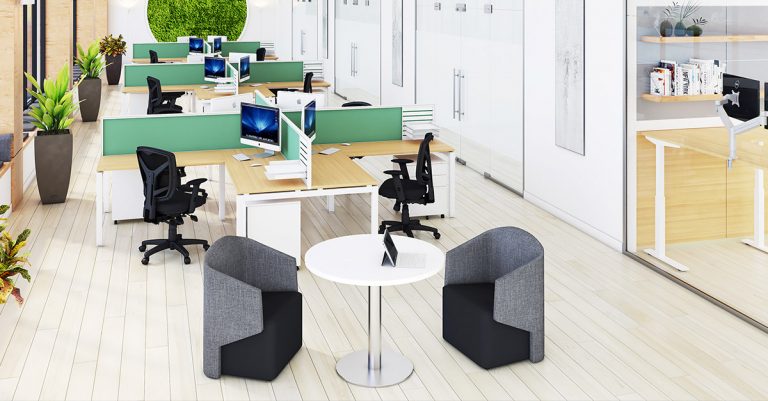We spend approximately a third of our lives at work, so making sure we take care of ourselves, and our employees, should be a priority. Unfortunately, we aren’t doing a terribly good job: a 2022 study reported 68.5% of Australian workers felt like they were burning out at work from chronic stress and energy depletion.
While large organisations often have established programs, for many small to medium-sized organisations, well-being initiatives often get put on the ‘nice to do’ list, are limited to an ‘out of the box’ Employee Assistance Program, or are delivered as one-off events or short-term programs like a wellness day, or the offer of an online course.
In a world where 84% of employees rate well-being at work as equally important to their salary, a considered, long-term approach to employee well-being is vital if organisations are to manage employee attrition, attract the right candidates and run sustainable businesses. Fortunately, this doesn’t have to be an overwhelming endeavor: listening to your employees and getting the right structures established is a great place to start.

Firstly, what is workplace well-being?
More than the absence of physical and mental ill health, well-being is the concept of living in a state where we can function properly and feel good at work and at home while we navigate the ups and downs of life.
Employee or workplace well-being is essentially how well your workplace supports or impacts all areas of your health. It’s a multi-faceted concept that doesn’t start and end with group walks at lunchtime or free online mental health courses. Workplace well-being requires consideration of a range of factors encompassing the physical environment, organisational culture and social structures, work duties, performance expectations, purposeful and meaningful work, and how much autonomy, recognition and appreciation people receive.
Why is a long-term focus on well-being important for staff and employers?
Consider this:
- Absences at work cost the Australian economy $44 billion each year! This is startling when you consider that 40-50% of these absences could have been avoided if poor lifestyle habits, poor general health and work-related stress had been addressed.
- *According to the Black Dog Institute “mental illness is now the leading cause of sickness absence and long-term work incapacity in Australia”.
- Quiet quitting – the phenomenon of doing the bare minimum required at work – is being fueled by disengagement and stress. Employees are taking their well-being into their own hands by refusing to go above and beyond to avoid stress, illness and poor mental health. Employers are then bearing the cost of lower productivity, staff attrition and recruitment.
It’s clear there is a need for employers to prioritise employee well-being to avoid negative impacts, but the benefits of being proactive are of even greater importance. The Health & Productivity Institute of Australia (HAPIA) Best-Practice Guidelines cite that benefits to employers include:
- Higher levels of productivity
- Improved employee engagement and staff morale
- Reduced workplace injuries
- Reduced absences due to sick leave*
- Increased creativity and innovation
- High staff retention rates
The benefits of workplace well-being programs for employees include:
- Increased energy
- Better relationships with colleagues
- Better physical and mental health
- High levels of concentration and productivity
- High levels of happiness and work/life satisfactions
- A sense of belonging, purpose and value
Not only do happier, healthier employees feel better at work, they do better: research shows that it can enable their organisations to outperform the competition by 20%.
Short-term and ‘try and see’ well-being initiatives like a healthy eating day, walking club or seminar still have their place, but rarely have a significant impact on an organisation. The intermittent nature of shorter-term interventions can also reveal an organisation’s lack of commitment to their employee’s long-term health.
A longer-term approach to workplace well-being – including ongoing adjustments continual evaluation – supports employees to maintain their well-being every day. This serves several purposes:
- It ensures the positive benefits of physical, mental health and nutrition initiatives are sustained long-term and creates good habits that become embedded in both people’s work and personal lives.
- It ensures that maintaining well-being becomes part of the organisational culture in the same way that a customer-focus, high-quality products, knowledge sharing, or an open-door managerial style does.
- It ensures that well-being programs remain fit for purpose as the workforce, and the world around us, changes.
- It positions the organisation as an employer of choice, enabling them to attract good candidates who are likely to stay for the long run.

How to approach improving employee well-being for the long term.
Make a start with furniture to support employee well-being
Furniture plays an integral role in workplace wellbeing. Workers are often sitting in the same position for extended periods of time that move our bodies into positions that can cause pain. At the core of all this is postural health. Furniture facilitates postural endurance by supporting the body through seating and desking.
Furniture and decor that is designed to be ergonomically beneficial, comfortable and create an environment that is conducive to feeling focused, calm and alert can greatly improve employee productivity, physical health and job satisfaction.
We recommend consulting with employees, office designers and furniture manufacturers like BFX to find the right balance of furniture that includes the following:
Height adjustable and sit stand desks – With a range of benefits, these have risen sharply in popularity as people recognize the benefits of combining standing and seating throughout the day. Height adjustability is a vital component of making an ergonomically sound workspace.
Ergonomic chairs – A quality ergonomic chair is often the most important element in a healthy workstation. When purchasing a chair it is important to look for features such as height adjustment, seat slide, seat tilt and high density foam. Some designs combine the functionality of an ergonomic chair with the aesthetics of an executive chair.
Monitor arms- An often overlooked component of an ergonomic workstation, monitor arms allow the user to position the monitors in an ideal location, promoting good posture and reducing eye strain.
Booths and partitions– Noise in open plan offices can increase stress and anxiety. We recommend using booths, adding decorative barriers like audio art partitions or planter walls as flexible ways to create private spaces, alternate working zones and reduce noise. Adding noise-absorbing ceiling installations can also help buffer sound in open-plan areas with hard floors.
Break-out furniture – Working from home taught us that having a change of space can do wonders for improving creativity and energy. Using lounges, comfy chairs, stools and high tables to create home-like or café-like spaces allows employees to work in a more social, collaborative way, relax and reset their energy levels.
While you’re thinking about furniture, consider finishes like woodgrains and natural textures. It has been proven that incorporating more natural elements into our working spaces can remind us of nature and have a calming effect. It is also worth taking a look around your office to see if you can channel more natural light into workspaces.
Establish a culture of well-being in your organisation
Establishing a culture of well-being normalises employees taking care of themselves as a part of running a business.
This is a long-term process that includes:
- Creating a culture of psychological safety where people can openly discuss their mental health and feel comfortable taking a day off to heal, just as they would for physical illness.
- Recognising that people’s work selves and home selves aren’t separate and that what affects them at work will affect them at home and vice versa.
- Prioritising work quality and completeness over the time spent at a desk. Eliminating the culture of expected overtime, and if high workloads are keeping people late at night, it’s time to revise your priorities and grow your team.
- Recognising that for people to be well at work, they need to work in a way that suits them. Whether that’s working remotely or flexibly, sitting on a sofa in the break room, or taking regular walks to stimulate creativity.
- Providing regular, genuine praise, gratitude and recognition to employees as a regular part of 1:1 check-in meetings, all-staff communications and day-to-day interactions. This has proven benefits for mental health and happiness.
- Ensuring senior leaders and managers are seen taking care of themselves. This means having proper lunch breaks in break-out spaces or outside, setting up their desk ergonomically, using the stairs, walking to people’s desks rather than phoning, talking about their exercise and weekend plans, and leaving the office on time.
Adopt other long-term strategies to improve employee well-being
The 2019-2022 Well-being Lab Australia Workplace Survey emphasises that there is no-one magic strategy that works for all people and all organisations. Workplace well-being strategies should be “an evidence-based, multi-dimensional well-being framework that allows your workers to choose the well-being approaches that work best for them.”
With that in mind, you and your employees could look at the following:
- Offer yearly or six-monthly employee-chosen well-being benefits.
These could include a voucher for a variety of experiences like a gym class, yoga, golf game, surfing lesson, rock-climbing, dance class, or horse-riding. Alternatively, you could offer a voucher for small exercise equipment (like a yoga mat), pedometer/health monitor, massage, exercise clothes, healthy meal-kit delivery, or extra holiday leave.
- Initiatives to help employees volunteer for causes that align with their values. Give employees the time or resources to volunteer or fundraise for a cause they’re close to. It may only be one or two days per year, but contributing to a greater purpose will improve their overall sense of well-being and self-worth.
- Offer opportunities for personal development.
There are often transferable skills that organisations can benefit from when they encourage employees to pursue their personal interests. This could include incorporating personal development actions like doing courses, workshops or extra study in an interest area into existing performance and development plans, offering coaching, or even setting up a library of books that people can borrow. - Make it easier to move.
Establish guidelines around everyday working practices to get people moving. Perhaps meetings under 15 minutes must be held standing up or walking, have fidget toys and exercise balls around the office to encourage small muscle movement, or ask employees to take the stairs if they are having a meeting only a floor or two up or down.
- Establish a monthly, seasonal or annual friendly competition.
Give employees something to look forward to, spark their creativity and get them talking to with people outside their team in a fun competition. It could be international cooking, baking, Christmas decorations, dancing, silly Olympics, a charity fun run/walk or a fitness challenge. The key is to make it a regular feature each year.
- Offer annual health visits.
Counteract the ‘I’m too busy to see the doctor’ excuse by inviting corporate health providers to come to your office each year and provide psychological assessments, mole checks, vaccinations and blood pressure checks.
The final word on long-term workplace well-being initiatives
While it’s tempting to dive-in headfirst and create a comprehensive plan, the best thing you can do to begin your organisation’s long-term commitment to well-being is to consult with your employees. They’re in the best place to know what they need and where the investment needs to go. If furniture is on the cards, the BFX team would be delighted to help you create an office design filled with furniture that will care for your employee’s physical well-being. Talk to us today.
We recommend reading these additional resources:
BFX's Workplace Wellbeing Initiative
BFX are committed to Workplace Wellbeing, to ensure better health and happiness for all workers.
Learn More about the Workplace Wellbeing Initiative













